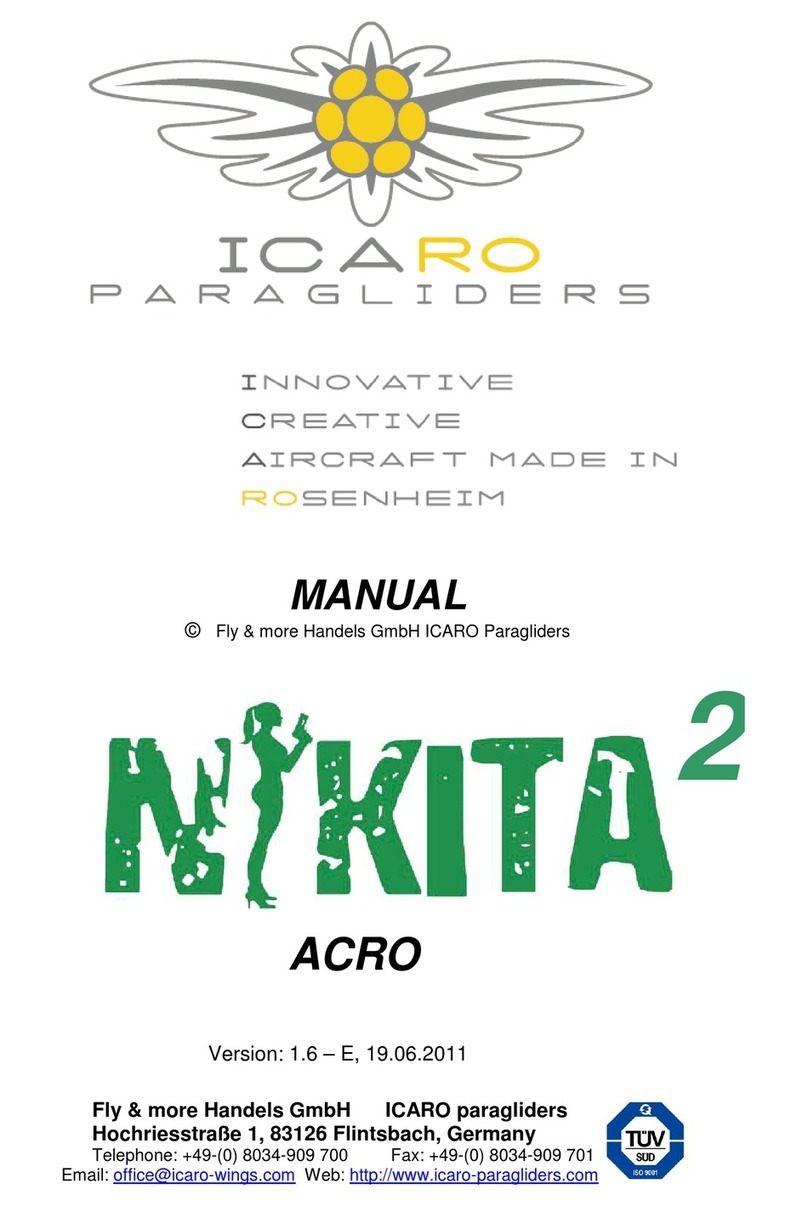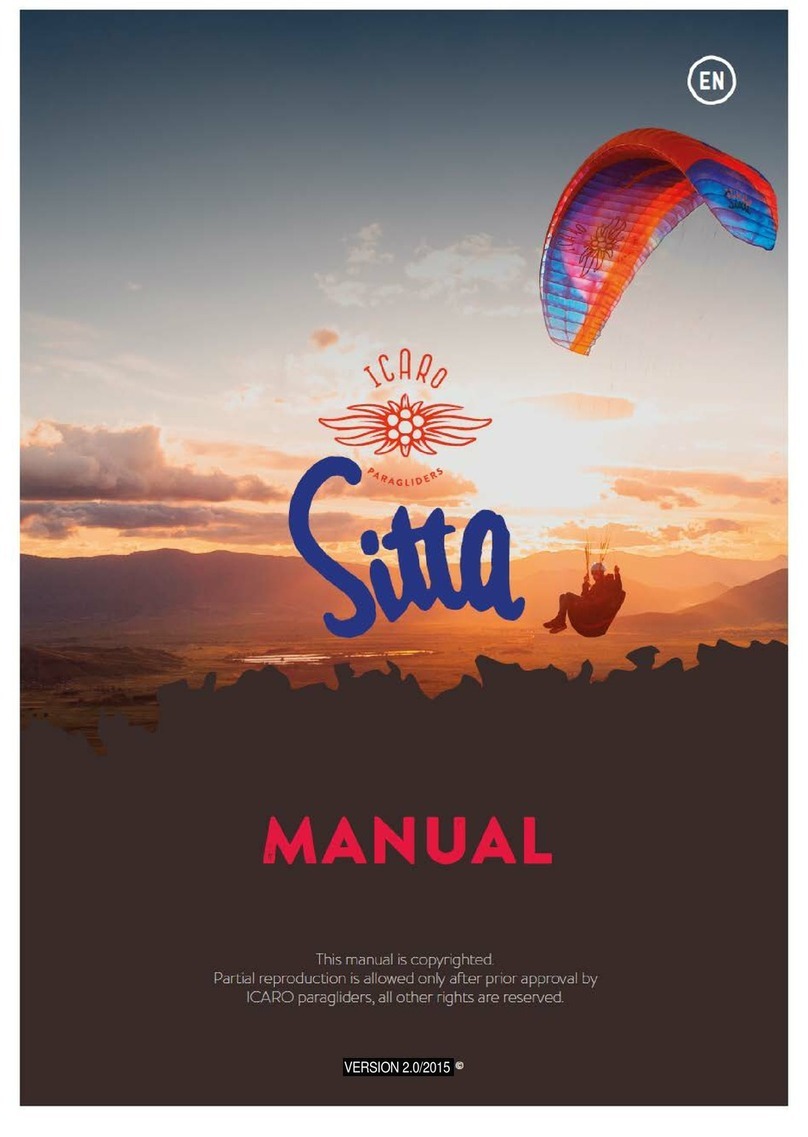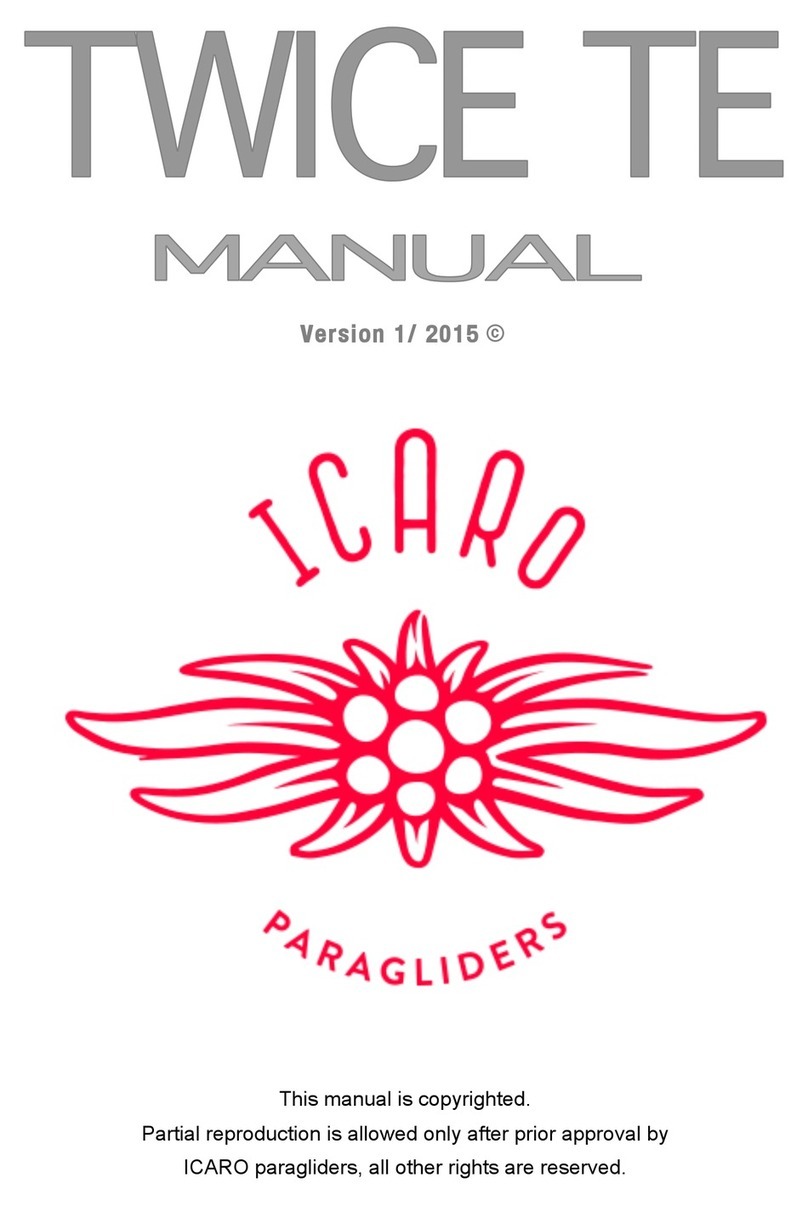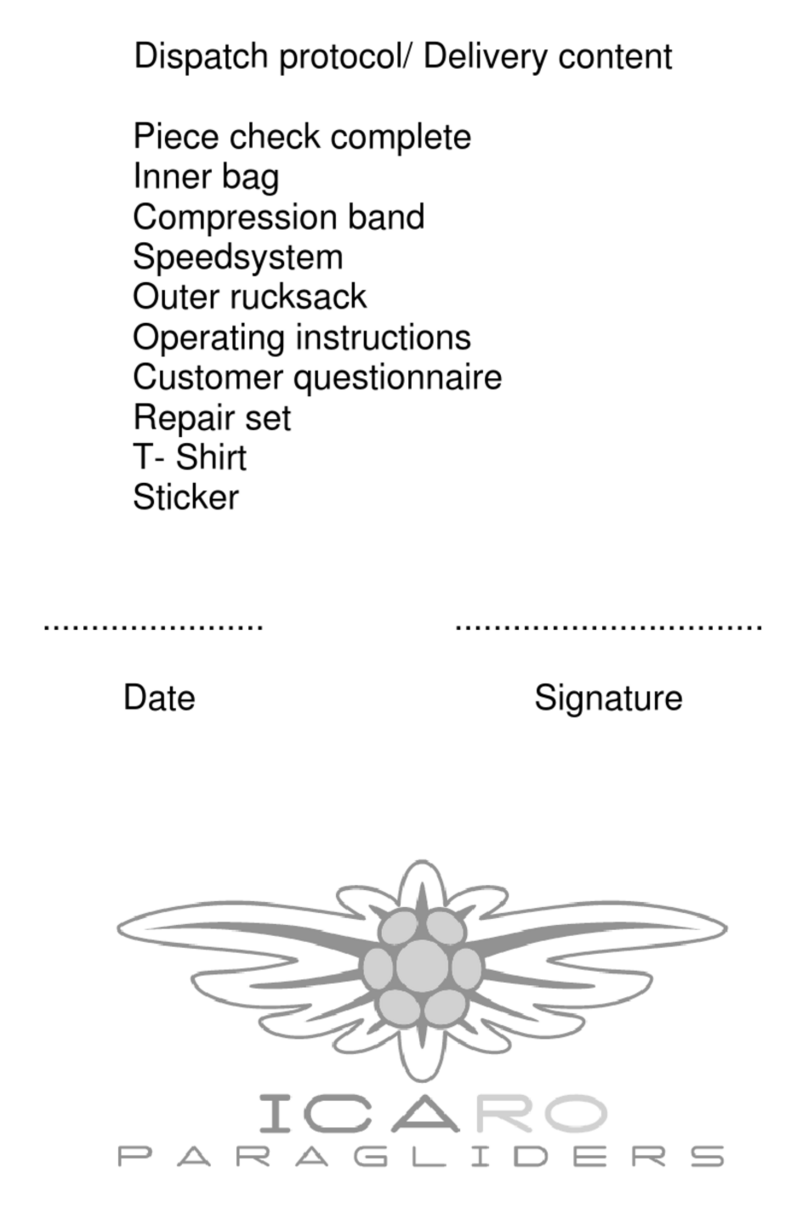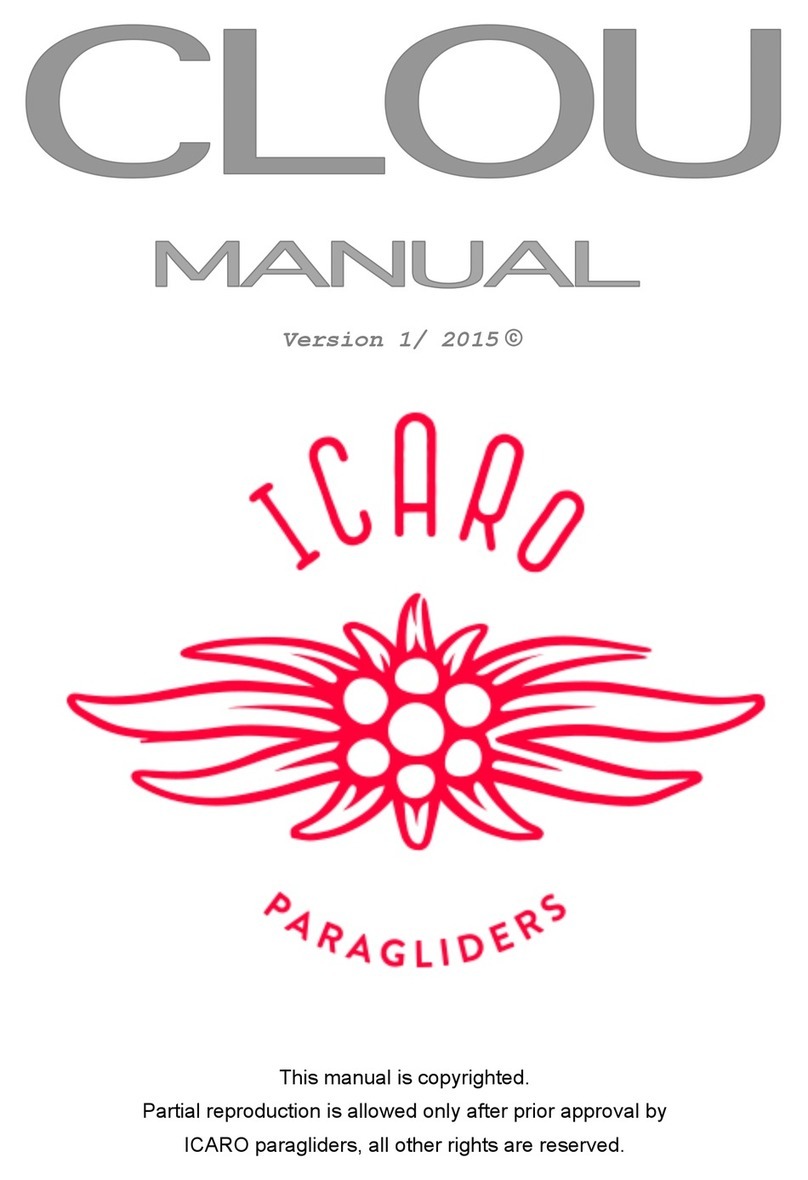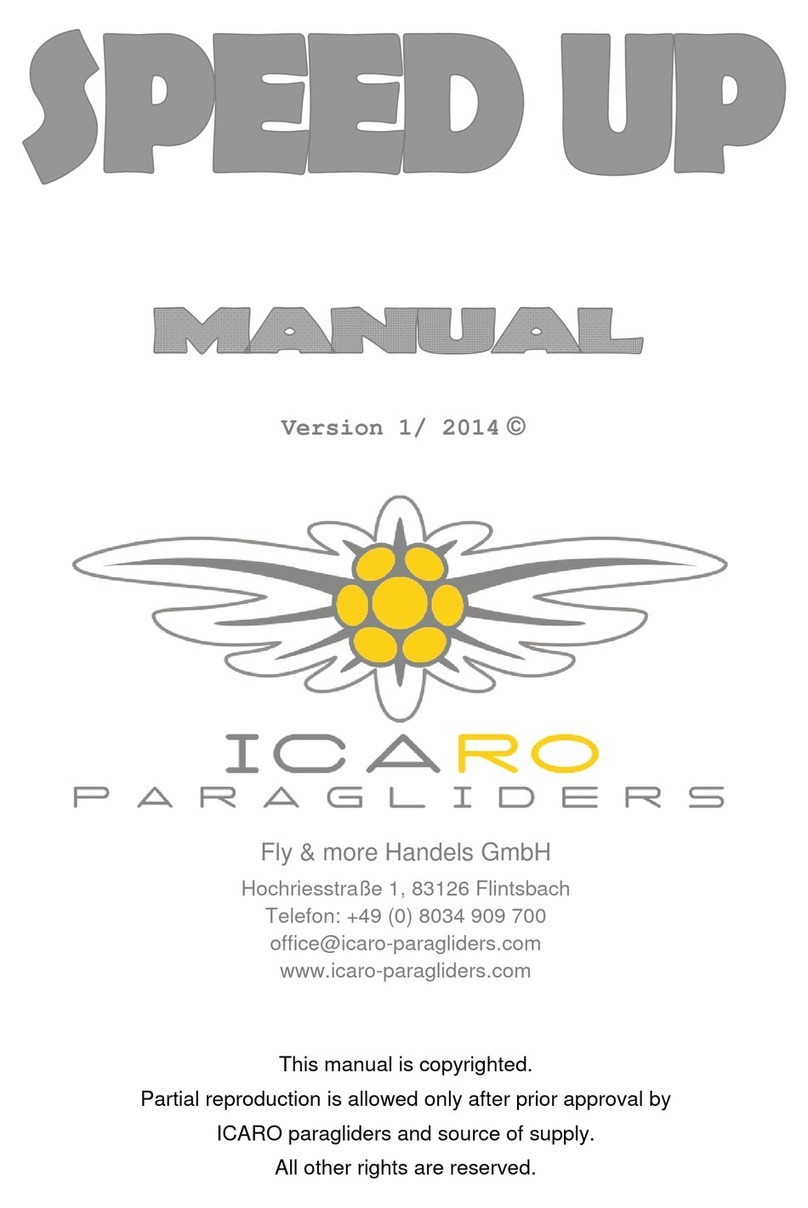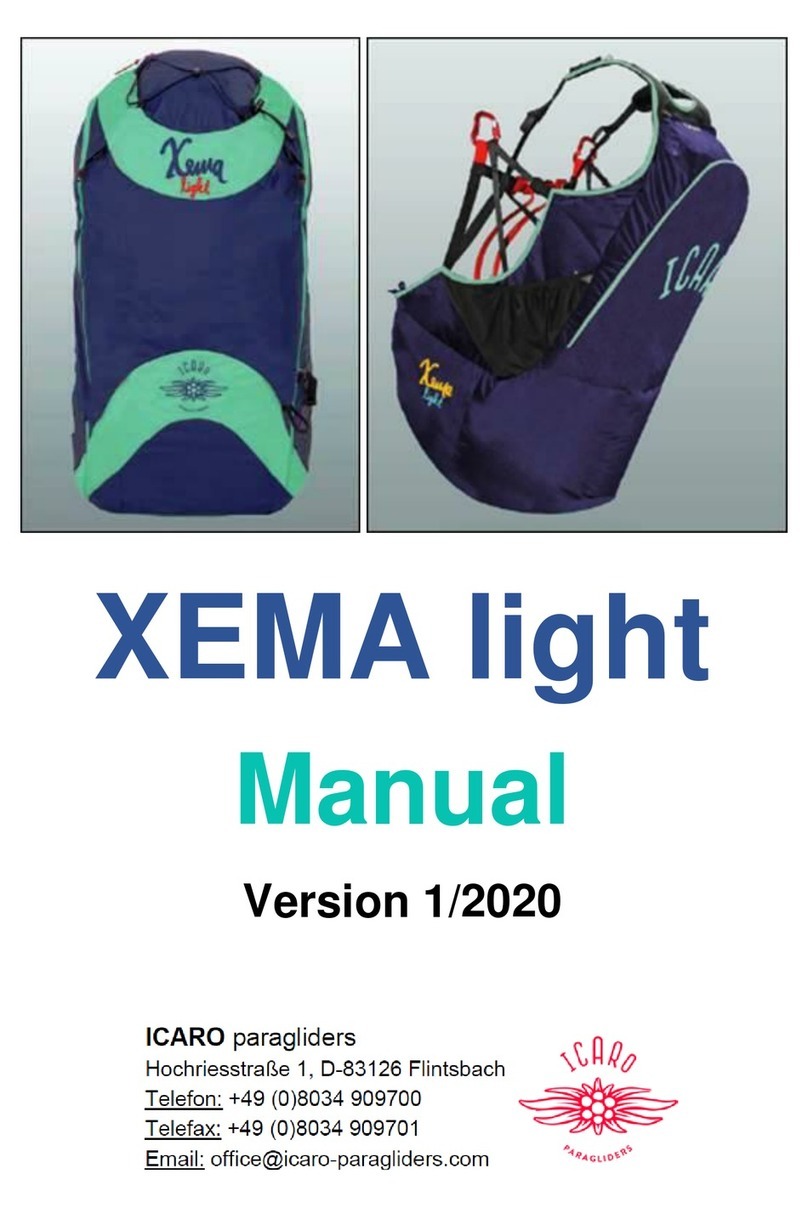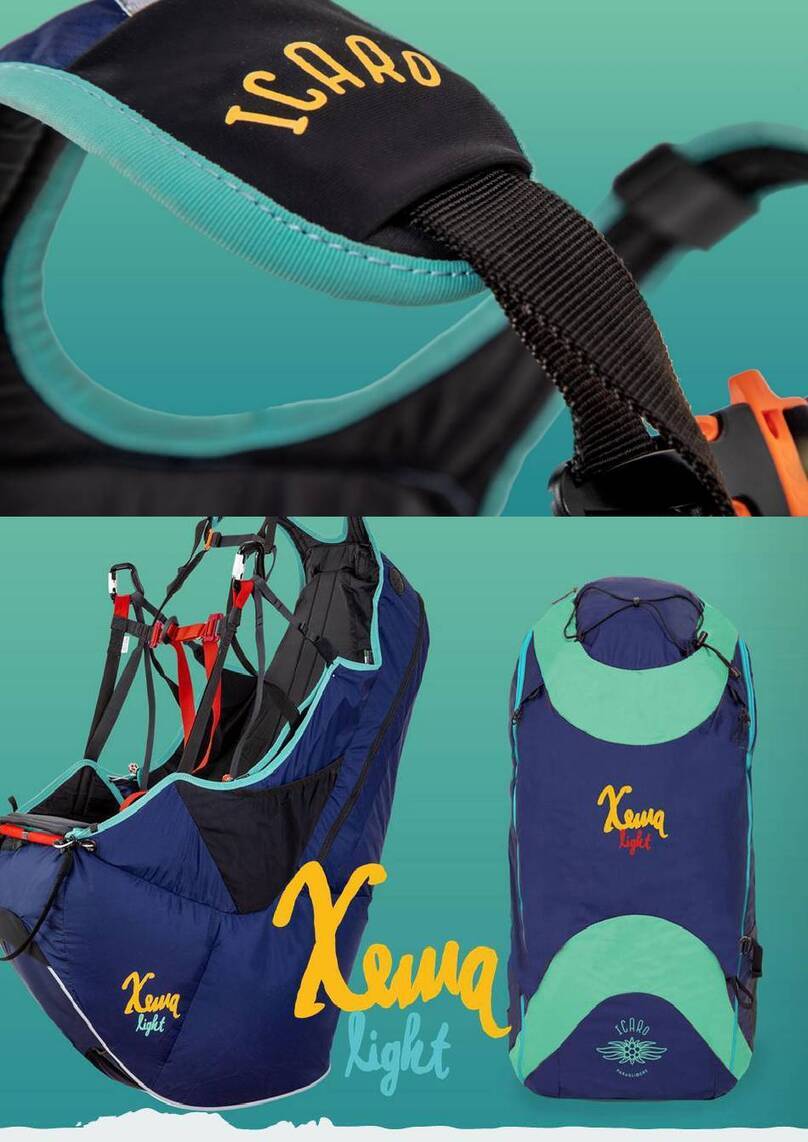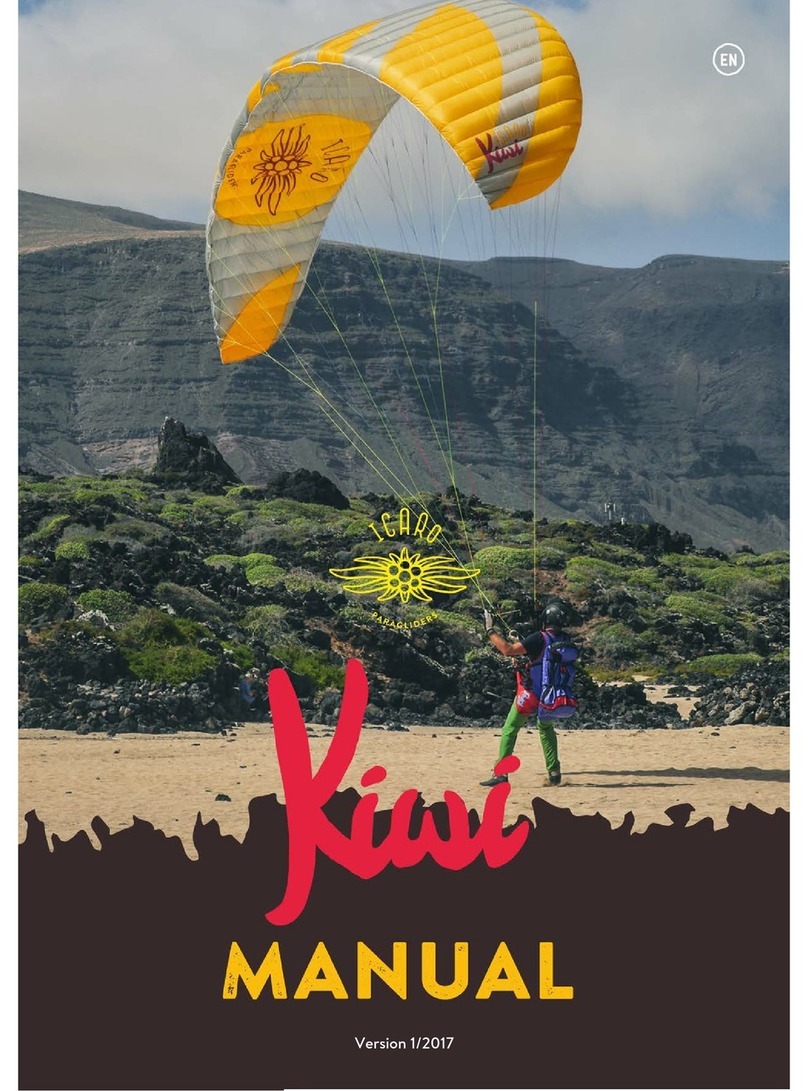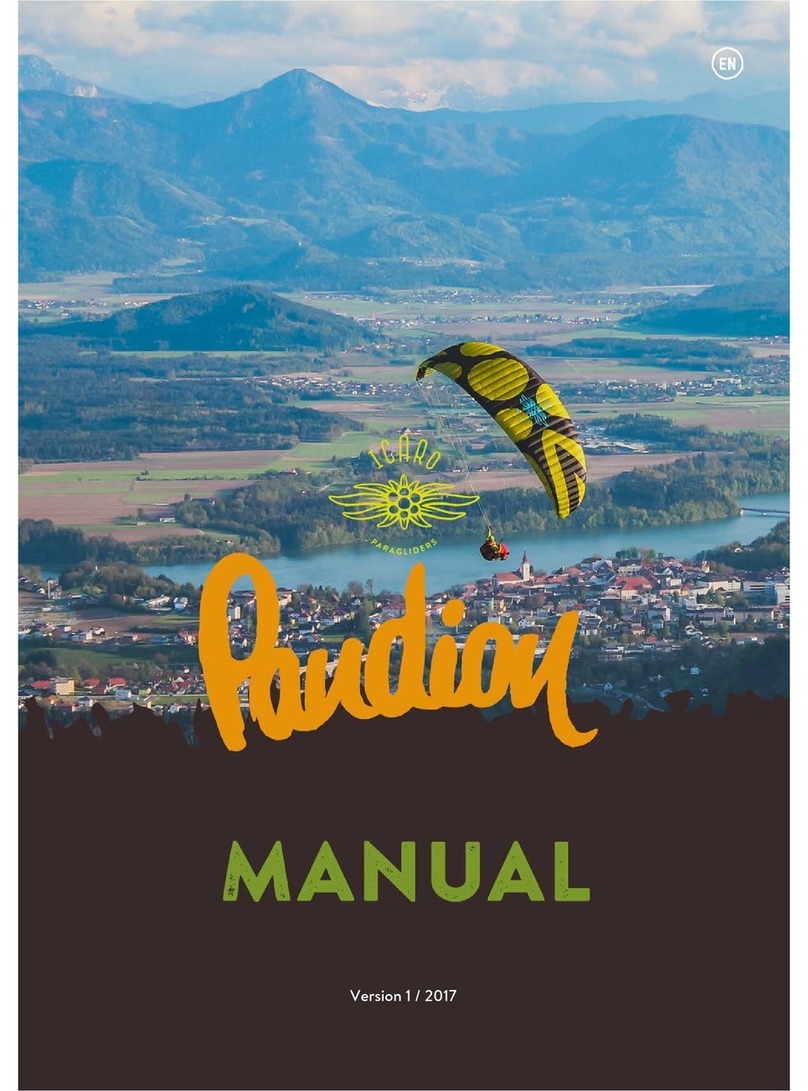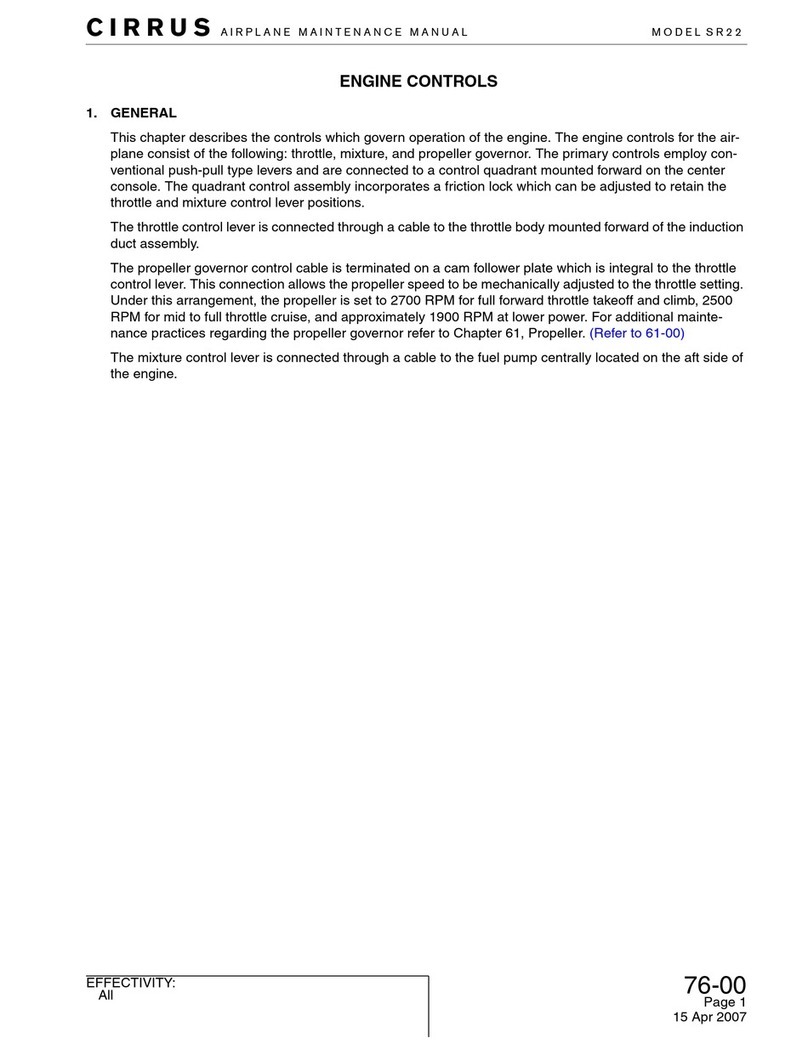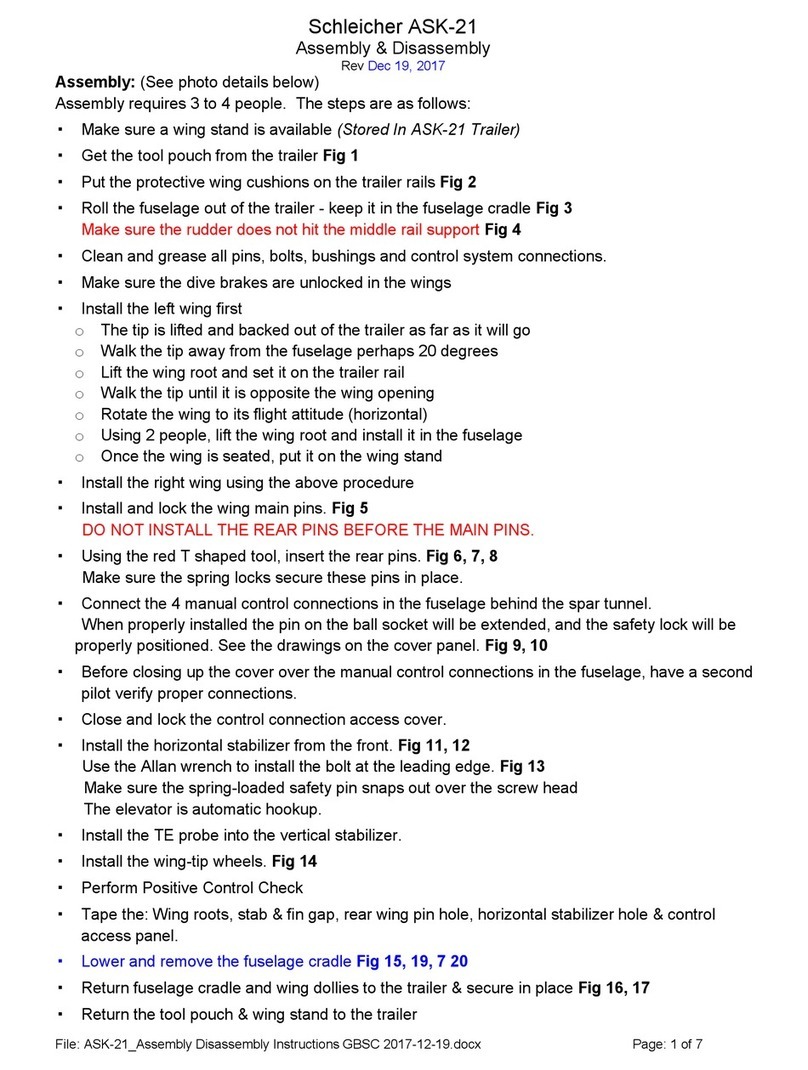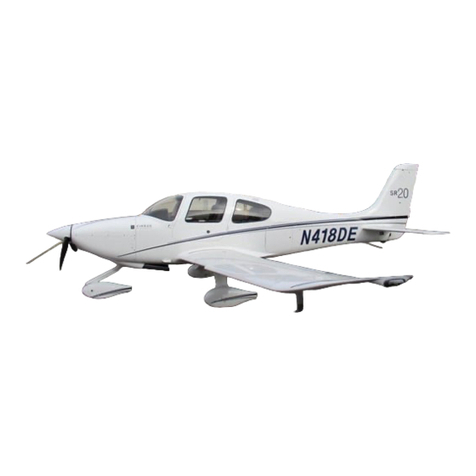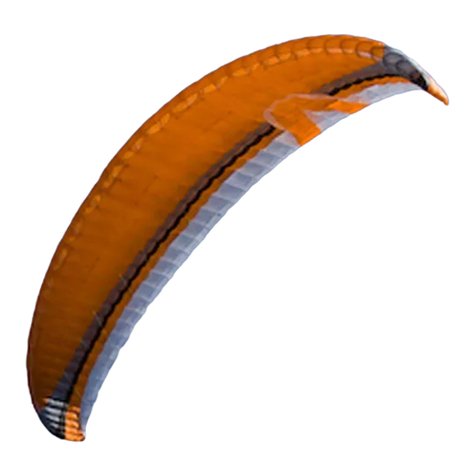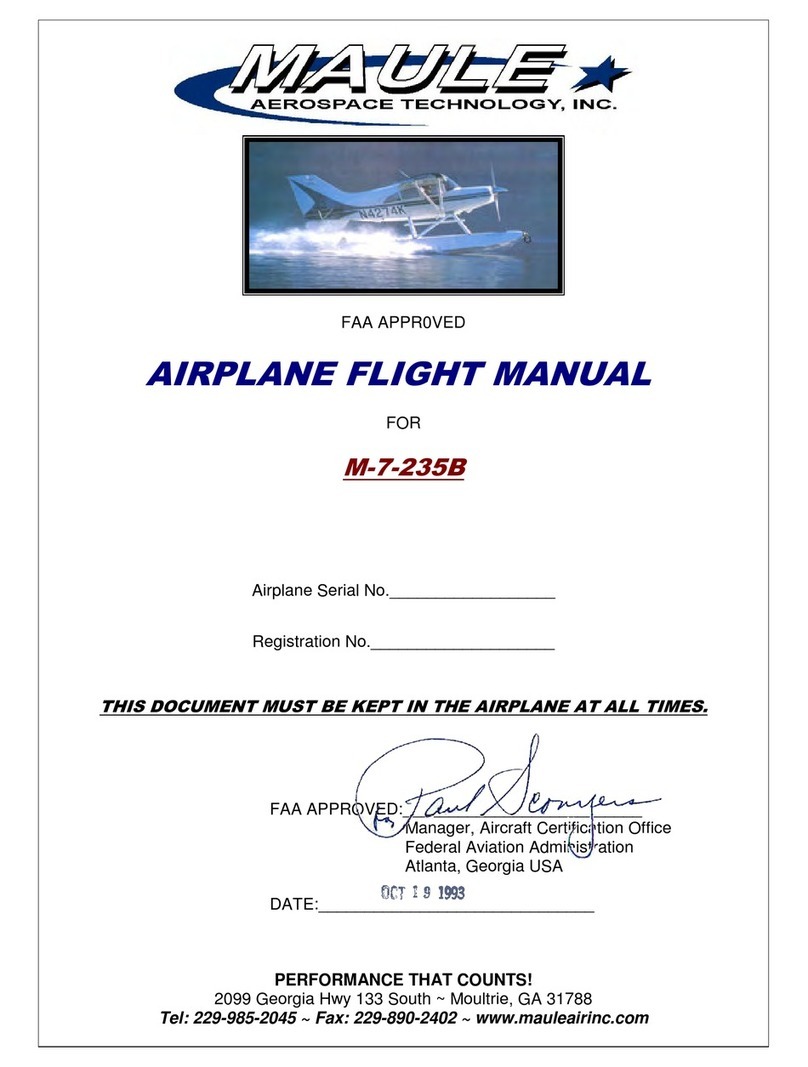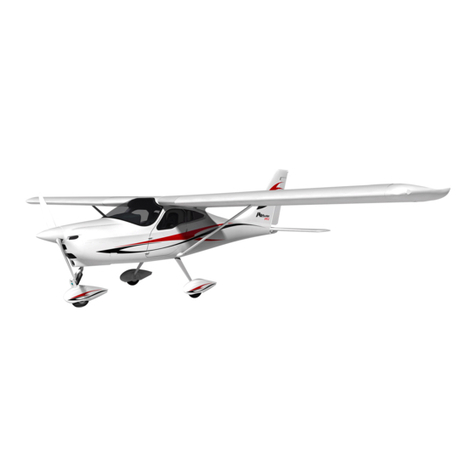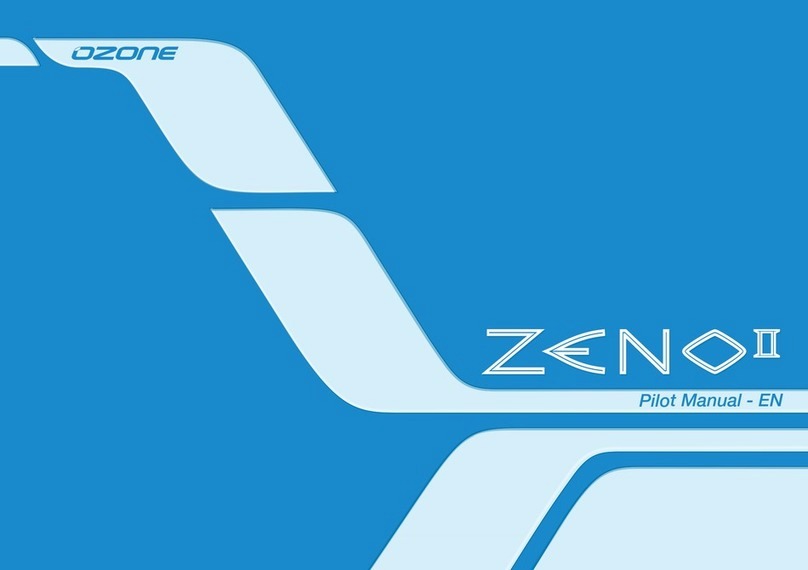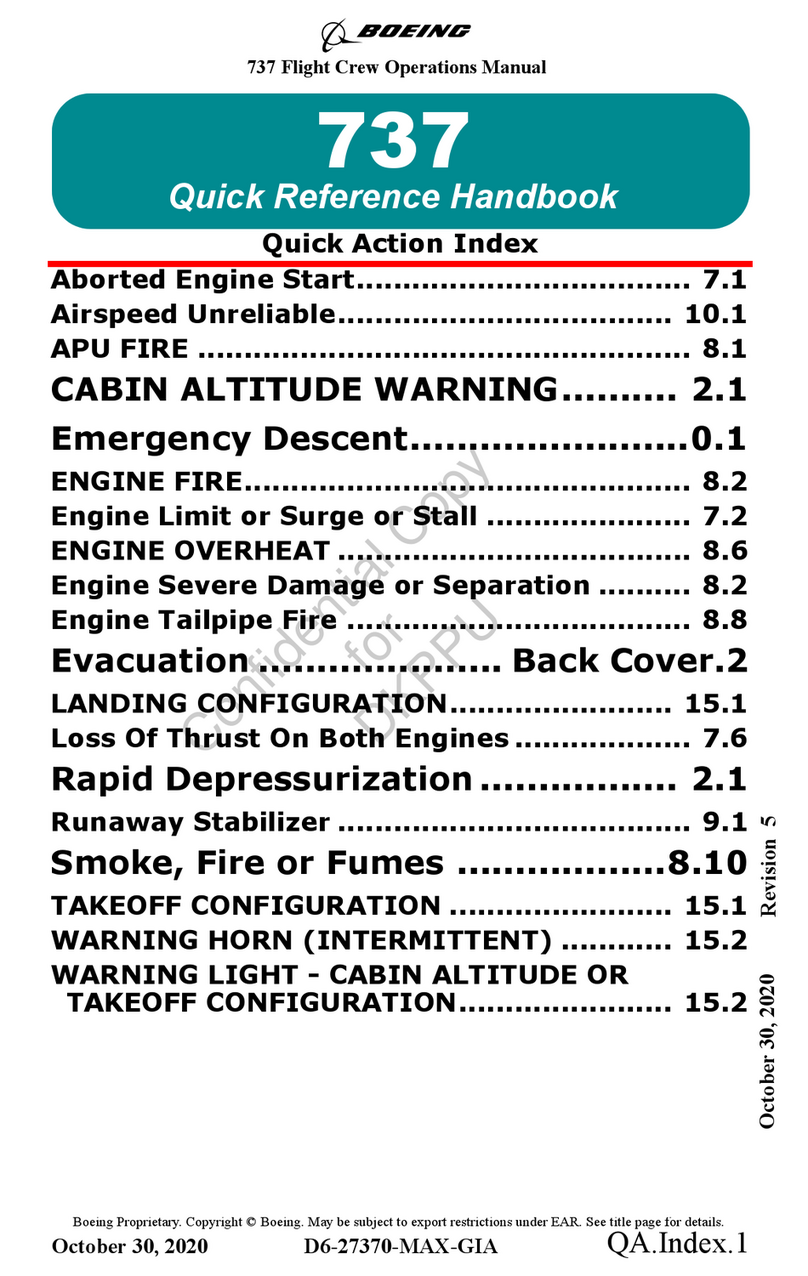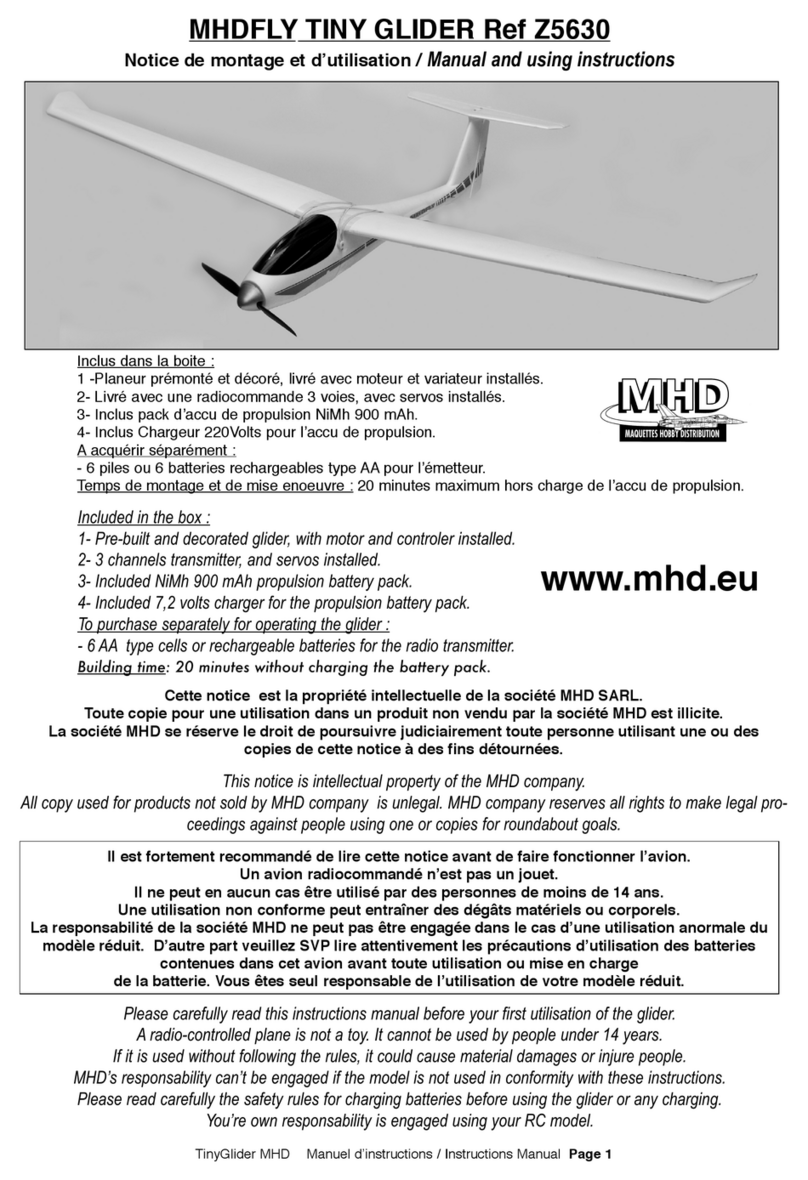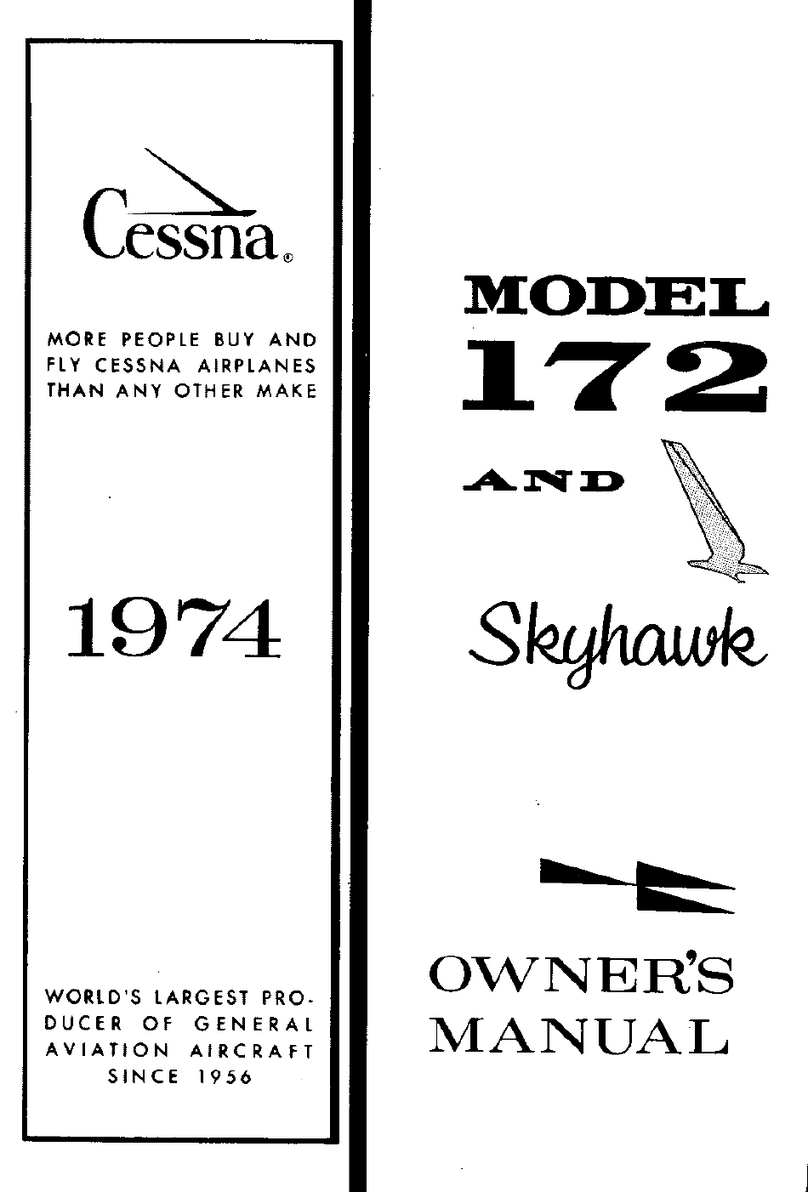Page 7
Flying with the NIKITA 5
We recommend that all talented NIKITA 5 acro pilots who have already gained
enough experience in all extremely maneuvers with small screens.
Despite the great inherent stability of the NIKITA 5 needed during the execution of
maneuvers with delicate little hands.
Depending on the surface load maneuvers are falling out with different dynamics.
The loss of altitude while flying maneuvers varies with the surface load. The
greater the surface area exposed, the more height loss, and violent reactions from
collapses and application can be the result.
The line geometry has been changed so that the largest possible tension spread
the risers to keep the Mc Twist and the Twist maneuvers similar risk as low as
possible.
The NIKITA 5 inspire of the high stability is not an acro glider for freestylers and
acro-newbie’s it has been opened for professionals.
The weight given in the data sheet recommendations will help the pilot to find an
optimal mix of dynamism and safety.
We recommend flying with an Acro harness. These seat belts are adapted to high
loads during the flight. Also own Acro harness place for two second chances for
double security.
Despite the small air intake openings, the glider starts very good.
The control paths are kept short so that all maneuvers, except for the Mc-Twist,
can be flown without winded steering lines.
In NIKITA 5 the stable point lies approximately on karabiner height. At full stall, for
example, the hands should only be to slightly bring under the stall point. In the
stable hands should never be entirely stretched. Despite the great inherent
stability of the NIKITA 5 requires a delicate hand. Covers and folds will be
responded with intense shooting and fast turning away.
We recommend flying aerobatic only exert a sufficient amount. With a life
vest, it is the surest way to make friends with the flight characteristics of
NIKITA 5.
Check the glider for wear after each aerobatics. When you fold up the
canopy (cell to cell) you also should visually inspect the loops and the
stitching on the leading edge. The lines should be regularly checked when
packing.
Despite the high wing loading can thermal flying with NIKITA 5 be fun. The art is to
keep the wing flat as possible, but still fly very tight radii. Suffice it a slight weight
shift to the inside of the curve.
Who is not pressed when turning the outer brake, will find themselves in a spiral
dive. Only about the outer brake the wing is prevented from drilling in the deep.
Who controls this technology can do in good conditions, long thermal flights.
Flying with weight shift and brake
To fly in Acro a nice long program will require precisely control impulses. "Less is
more" is the motto for a well-designed wing loading from 5.3 kilograms per square
meter surface. Thus, the NIKITA 5 reacts to every little impulse control. It is
sufficient to exert gentle pressure to the thigh on the seat.
